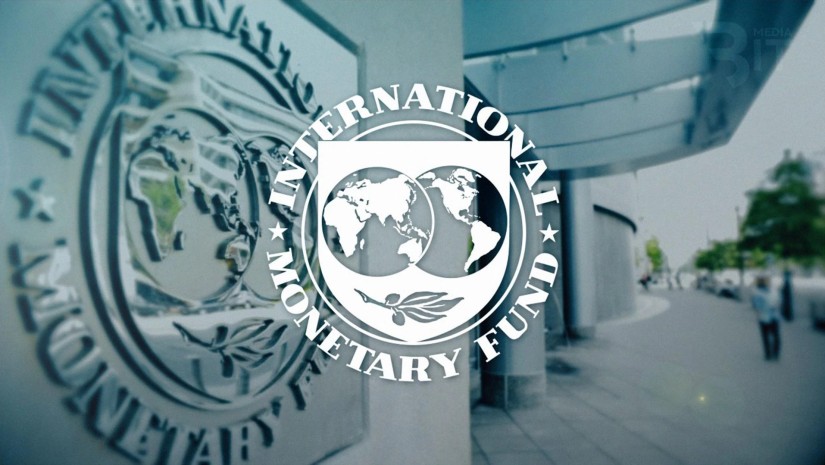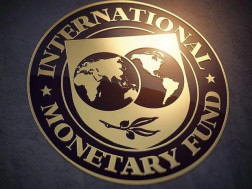An International Monetary Fund (IMF) mission led by Mr. Matthew Gaertner conducted discussions for the 2024 Article IV consultation with Georgia during March 6-18 in Tbilisi. At the end of the visit, the mission issued the following statement, which summarizes its main conclusions and recommendations:
Growth remained above trend at 7.5 percent in 2023, driven largely by tourism, trade, construction, and financial services as well as continued strong investments. Growth is expected to ease to 5.7 percent in 2024, with consumption playing a larger role supported by strong real wage growth and employment. In the medium term, growth is expected to converge to its potential rate of around 5 percent.
Inflation fell sharply during 2023 and closed the year at 0.4 percent, helped by a strong lari, lower commodity prices, and a tight monetary policy stance. In response, the NBG has lowered its policy rate by a cumulative 275 basis points since May 2023 to 8.25 percent in March. Inflation is expected to reach 4 percent by the end of 2024, as the impact of the favorable external factors from last year dissipates and the restrictiveness of the monetary policy stance is unwound. Inflation is expected to converge back to target in the medium term.
The current account deficit is estimated to have remained at a historic low of 4.5 percent of GDP in 2023, with lower remittances from Russia offset by an improved goods trade deficit helped by lower import prices. Gross international reserves stood at $5 billion at end-2023, covering just above 3 months of imports. The current account deficit is expected to widen in 2024 to 6 percent of GDP as remittances continue to normalize and imports pick up. In the medium term, it should converge to 5.5 percent of GDP as the services trade balance continues to improve.
The fiscal deficit in 2023 (including budget lending) was 2.4 percent of GDP, compared to a budgeted deficit of 2.8 percent, reflecting overperformance in revenues. The 2024 budget targets a deficit of 2.5 percent of GDP, with increased revenues from CIT for banks and new gambling taxes financing increased expenditures, including on higher wages, social benefits, and capital investments. Public debt is expected to remain below 40 percent of GDP in 2024 and over the medium term.
Risks to the outlook are tilted to the downside amid considerable uncertainty regarding the outlook for war-related migrant and financial inflows and shifting geo-economic patterns. While a large number of migrants have reportedly settled in Georgia, a reversal of migrant, FX, and tourism inflows, as well as intensification of sanctions that adversely affect the Georgian economy and geo-economic fragmentation remain key downside risks. A loss of momentum or backsliding in the reform agenda is also a downside risk. Upside risks include increased transit trade and investments, with shifting geo-economic patterns creating new trade opportunities, and EU candidate status sending a positive signal to investors.
Policy Priorities
Macroeconomic and financial policies should be geared towards ensuring strong, sustained, and inclusive growth, continued resilience in the face of an uncertain external environment, and the goal of making decisive progress towards EU accession.
Fiscal Policy
Modest further fiscal adjustment is appropriate in the medium term to build sufficient buffers under the fiscal rule and create room for productive spending. Fiscal deficits in the range of 2-2.5 percent of GDP would help stabilize public debt at around 40 percent of GDP and ensure it remains below the fiscal rule ceiling in the event of adverse shocks. The adjustment should be underpinned by a medium-term revenue strategy with further enhancement of revenue administration and streamlined tax expenditures, and enhanced project prioritization and spending efficiency.
Steadfast implementation of SOE reform and renewable energy development strategies adopted in late-2022 is needed to raise productivity and limit fiscal risks, and to ensure the state’s ownership policies regarding SOEs are converging with EU principles.
In line with the reform strategy agreed with the staff under the Stand-By Arrangement and adopted in 2022, the SOE law should ensure that the Ministry of Finance is appropriately empowered to have a strong oversight role to monitor and mitigate fiscal risks, and that there is a clear separation between the state’s shareholder, regulatory, and policy functions to avoid conflicts of interests. Efforts to concretely reduce the footprint of the state in the economy need to be stepped up.
The authorities should proceed with the electricity market’s opening—which has been delayed again. Further support under the renewable energy support scheme should be determined based on updated demand and supply projections that net out legacy projects that are advancing under existing contracts. The legacy projects that are not advancing should be terminated, and the costs of the scheme should not create fiscal risks.
Monetary and exchange rate policy
Anchoring inflation at the NBG’s target will require a gradual and cautious approach to further policy rate cuts. While headline inflation remains low, it is projected to reach the NBG’s 3 percent target during 2024. Further rate cuts should be data-driven and the decision-making process should be clearly communicated to anchor expectations about the pace of monetary easing.
Continued exchange rate flexibility and reserve build-up are necessary to guard against adverse external shocks. With external inflows moderating and reserve coverage still lower than desired, continued opportunistic reserve accumulation is needed to build further buffers. The NBG should intervene in the FX market only to avoid disorderly market conditions.
Strengthening the NBG’s governance and independence is essential to the credibility of monetary policy. In this regard, the NBG law should be amended to i) ensure a non-executive majority on the NBG’s oversight board, ii) clarify and strengthen the succession framework and board member qualification criteria, and iii) move from a presidential to collegial decision-making model.
Financial sector resilience
The banking system is well capitalized, profitable, and liquid but remains highly concentrated and dollarized. High uncertainty around FX inflows and global financial conditions calls for maintaining adequate loan loss reserves and capital buffers. While the NBG uses an array of macroprudential measures to mitigate the risks from concentration and dollarization, these structural issues can only be sustainably addressed by improving competition in the banking system and by strengthening macroeconomic policy frameworks that would underpin stable growth and inflation.
Continued vigilance is needed against financial sector risks, including from capital inflows, virtual assets, and sanctions. Proper licensing, regulation, and supervision of virtual asset service providers and digital banks require strong AML/CFT controls to protect against financial integrity, reputational, and conduct risks given the large volume of cross border FX and crypto transactions.
Structural reforms
Stronger, more inclusive, and job-rich growth requires enhancing education, productivity, infrastructure, and governance. Enhancing the quality of teaching and training and raising agricultural productivity, including by improving land registration and management, can help address entrenched high unemployment and low rural labor force participation. Prioritizing investments in transport, logistics, and energy can help lower trade costs, boost trade diversification, and enhance regional connectivity. While Georgia ranks high in the region and among EU candidates regarding the rule of law and absence of corruption, recent years have seen some slippages in governance indicators. To ensure that governance standards strengthen and support improved competitiveness, Georgia needs to bolster its judicial system and strengthen the anti-corruption authority.
















